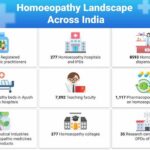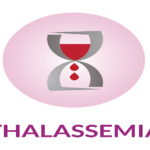“Government of India is leading the COVID-19 response and management in the country in close coordination and collaboration with the State/UT governments.”
New Delhi, April 30, 2021:
Several strategic and calibrated measures have been taken for the prevention, containment and management of COVID-19. The Ministry of Health and Family Welfare today issued guidelines in suppression to the earlier guidelines issued on the subject on 2nd July 2020.
As per the revised guidelines, the patients who are clinically assigned to be mild / asymptomatic are recommended for home isolation.
Asymptomatic COVID-19 Cases-
The asymptomatic cases are laboratory confirmed cases not experiencing any symptoms and having oxygen saturation at room air of more than 94%. Clinically assigned mild cases are patients with upper respiratory tract symptoms (&/or fever) without shortness of breath and having oxygen saturation at room air of more than 94%.
- Patients eligible for home isolation
-
- The patient should be clinically assigned as mild/ asymptomatic case by the treating Medical Officer.
- Such cases should have the requisite facility at their residence for self-isolation and for quarantining the family contacts.
- A care giver should be available to provide care on 24 x7 basis. A communication link between the caregiver and hospital is a prerequisite for the entire duration of home isolation.
- Elderly patients aged more than 60 years and those with co-morbid conditions such as Hypertension, Diabetes, Heart disease, Chronic lung/liver/ kidney disease, Cerebro-vascular disease etc shall only be allowed home isolation after proper evaluation by the treating medical officer.
- Patients suffering from immune compromised status (HIV, Transplant recipients, Cancer therapy etc.) are not recommended for home isolation and shall only be allowed home isolation after proper evaluation by the treating medical officer.
-
- The care giver and all close contacts of such cases should take Hydroxychloroquine prophylaxis as per protocol and as prescribed by the treating medical officer.
- In addition, the guidelines on home-quarantine for other members available at: https://www.mohfw.gov.in/pdf/Guidelinesforhomequarantine.pdf, shall be also followed.
- Instructions for the patient
-
- Patient must isolate himself from other household members, stay in the identified room and away from other people in home, especially elderlies and those with co-morbid conditions like hypertension, cardiovascular disease, renal disease etc.
- The patient should be kept in a well-ventilated room with cross ventilation and windows should be kept open to allow fresh air to come in.
- Patient should at all times use triple layer medical mask. Discard mask after 8 hours of use or earlier if they become wet or visibly soiled. In the event of care giver entering the room, both care giver and patient may consider using N 95 mask.
- Mask should be discarded only after disinfecting it with 1% Sodium Hypochlorite.
- Patient must take rest and drink lot of fluids to maintain adequate hydration.
- Follow respiratory etiquettes at all times.
- Frequent hand washing with soap and water for at least 40 seconds or clean with alcohol-based sanitizer.
- Don’t share personal items with other people in the household.
- Ensure cleaning of surfaces in the room that are touched often (tabletops, doorknobs, handles, etc.) with 1% hypochlorite solution.
- Self-monitoring of blood oxygen saturation with a pulse oximeter is strongly advised.
- The patient will self-monitor his/her health with daily temperature monitoring and report promptly if any deterioration of symptom as given below is noticed.
Monitoring chart
|
Day of symptoms and time (every 4 hourly) |
Temperature |
Heart rate (from pulse oximeter) |
SpO2 % (from pulse oximeter) |
Feeling: (better /same /worse) |
Breathing: (better / same/ worse) |
- Instructions for caregivers
-
- Mask:
- The caregiver should wear a triple layer medical mask. N95 mask may be considered when in the same room with the ill person.
- Mask:
o Front portion of the mask should not be touched or handled during use.
o If the mask gets wet or dirty with secretions, it must be changed immediately.
o Discard the mask after use and perform hand hygiene after disposal of the mask.
o He/she should avoid touching own face, nose or mouth.
-
- Hand hygiene
- Hand hygiene must be ensured following contact with ill person or his immediate environment.
- Hand hygiene should also be practiced before and after preparing food, before eating, after using the toilet, and whenever hands look dirty.
- Use soap and water for hand washing at least for 40 seconds. Alcohol-based hand rub can be used, if hands are not visibly soiled.
- After using soap and water, use of disposable paper towels to dry hands is desirable. If not available, use dedicated clean cloth towels and replace them when they become wet.
- Hand hygiene
o Perform hand hygiene before and after removing gloves.
-
- Exposure to patient/patient’s environment
- Avoid direct contact with body fluids of the patient, particularly oral or respiratory secretions. Use disposable gloves while handling the patient.
- Avoid exposure to potentially contaminated items in his immediate environment (e.g., avoid sharing cigarettes, eating utensils, dishes, drinks, used towels or bed linen).
- Food must be provided to the patient in his room. Utensils and dishes used by the patient should be cleaned with soap/detergent and water wearing gloves. The utensils and dishes may be re-used.
- Clean hands after taking off gloves or handling used items. Use triple layer medical mask and disposable gloves while cleaning or handling surfaces, clothing or linen used by the patient.
- Perform hand hygiene before and after removing gloves
- Exposure to patient/patient’s environment
-
- Biomedical Waste disposal
-
-
- Effective waste disposal shall be ensured so as to prevent further spread of infection within household. The waste (masks, disposable items, food packets etc.) should be disposed of as per CPCB guidelines (available at: http://cpcbenvis.nic.in/pdf/1595918059_mediaphoto2009.pdf)
-
- Treatment for patients with mild /asymptomatic disease in home isolation
-
- Patients must be in communication with a treating physician and promptly report in case of any deterioration.
- Continue the medications for other co-morbid illness after consulting the treating physician.
- Patients to follow symptomatic management for fever, running nose and cough, as warranted.
- Patients may perform warm water gargles or take steam inhalation twice a day.
- If fever is not controlled with a maximum dose of Tab. Paracetamol 650mg four times a day, consult the treating doctor who may consider advising other drugs like non-steroidal anti-inflammatory drug (NSAID) (ex: Tab. Naproxen 250 mg twice a day).
- Consider Tab Ivermectin (200 mcg/kg once a day, to be taken empty stomach) for 3 to 5 days.
-
- Inhalational Budesonide (given via inhalers with spacer at a dose of 800 mcg twice daily for 5 to 7 days) to be given if symptoms (fever and/or cough) are persistent beyond 5 days of disease onset.
- The decision to administer Remdesivir or any other investigational therapy must be taken by a medical professional and administered only in a hospital setting. Do not attempt to procure or administer Remdesivir at home.
- Systemic oral steroids not indicated in mild disease. If symptoms persist beyond 7 days (persistent fever, worsening cough etc.) consult the treating doctor for treatment with low dose oral steroids.
- In case of falling oxygen saturation or shortness of breath, the person should require hospital admission and seek immediate consultation of their treating physician/surveillance team.
- When to seek medical attention
Patient / Care giver will keep monitoring their health. Immediate medical attention must be sought if serious signs or symptoms develop. These could include-
-
- Difficulty in breathing,
- Dip in oxygen saturation (SpO2 < 94% on room air)
- Persistent pain/pressure in the chest,
- Mental confusion
- When to discontinue home isolation
Patient under home isolation will stand discharged and end isolation after at least 10 days have passed from onset of symptoms (or from date of sampling for asymptomatic cases) and no fever for 3 days.
There is no need for testing after the home isolation period is over.
- Role of State/District Health Authorities
-
- States/ Districts should monitor all cases under home isolation.
- The health status of those under home isolation should be monitored by the field staff/surveillance teams through personal visit along with a dedicated call centre to follow up the patients on daily basis.
- The clinical status of each case shall be recorded by the field staff/call centre (body temperature, pulse rate and oxygen saturation). The field staff will guide the patient on measuring these parameters and provide the instructions (for patients and their care givers). This mechanism to daily monitor those under home isolation shall be strictly adhered to.
- Details about patients under home isolation should also be updated on COVID-19 portal and facility app (with DSO as user). Senior State and District officials should monitor the records updation.
- A mechanism to shift patient in case of violation or need for treatment has to be established and implemented. Sufficient dedicated ambulances for the same shall be organised. Wide publicity for the same shall also be given to the community.
- All family members and close contacts shall be monitored and tested as per protocol by the field staff.







